Project Risk Management with Oracle Primavera Risk Analysis

Figure 1: Project Risk Management and Risk Analysis for All Disciplines
Every project has risks. The organizations that succeed are the ones that plan for those risks—anticipating, mitigating, and providing response and contingency plans for negative events that may or may not occur. Oracle Primavera Risk Analysis software provides the tools for doing just this, enabling companies to model risks and analyze the cost and schedule impacts of mitigating them—and, in the process, taking much of the uncertainty out of project and portfolio management.
Analyzing, Mitigating, and Managing Risk
By integrating directly with project schedules as well as cost estimates to model risks and uncertainty, Primavera Risk Analysis provides a full-lifecycle cost and schedule risk analytics solution for the Primavera project portfolio management applications and Microsoft Project.
Providing quick and easy techniques for determining contingency and risk response plans as well as a comprehensive means of reporting project confidence levels, Primavera Risk Analysis risk-loads projects through risk registers and risk templates before using Monte Carlo simulation to analyze them. It then provides a variety of reports, such as risk histograms, tornados, and scatter plots, that enable users to easily identify risk drivers before (optionally) publishing the resulting risk-adjusted schedules back into the schedule.
Providing an Objective View for Effective Assessment
As a decision support tool for determining confidence levels regarding project costs and schedules, Primavera Risk Analysis delivers an objective view of required contingencies and an analysis of the effectiveness of proposed risk response plans. These combine to form the basis of a risk-adjusted schedule—now a standard part of the planning and scheduling process. To support this mission, Primavera Risk Analysis offers the following features:
Risk Analysis Guide
Outlining the steps entailed in the risk analysis process, the Risk Analysis Guide takes users through the process of preparing, modeling, and running a risk analysis. Each of the required steps—schedule validation, development of the risk model, risk analysis, and results review—links to the Primavera risk analysis feature users must employ to complete it.
Schedule Check
The Primavera Risk Analysis Schedule Check feature lets users evaluate schedule maturity and risk readiness by seeking common scheduling problems that can affect deterministic schedules. The Schedule Check report provides the rationale behind each check and explains how it can affect risk analysis. It also provides a list of the activities identified.
Templated Quick Risk
The Primavera Risk Analysis Templated Quick Risk feature uses a template approach to assign uncertainty risk distributions to tasks based on WBS (work breakdown structure), activity code, user-defined field, or filter. Providing a more advanced way of executing quick risk, these templates make it easy to model task uncertainty.
Risk Register Wizard
With the Primavera Risk Analysis Risk Register Wizard, users can quickly create new risk registers, defining risk scoring criteria, entering qualitative risk assessments, and mapping risks to scheduled activities. Users can then gather quantitative assessments and more-detailed information in the resulting risk registers.
Risk Register
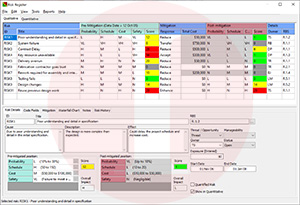
Figure 2: Oracle Primavera Risk Register
By using the Risk Register feature in Primavera Risk Analysis, users can integrate predeveloped risk registers as well as define new ones (see Figure 2 at right). Users can also employ this feature to produce both qualitative and quantitative models of positive and negative risk events (threats and opportunities) and their associated response plans (such as mitigation).
Risk Register also automatically integrates identified risk events into the schedule, by creating a risk event plan, which users can then analyze to determine both key risk drivers and the cost-effectiveness of the identified mitigation strategies.
Primavera Risk Analysis
Primavera Risk Analysis uses advanced Monte Carlo-based cost and schedule analytics to provide full-lifecycle risk management through the following types of risk models: estimate uncertainty, task existence, probabilistic branching, fixed-cost uncertainty, variable-cost uncertainty, resource uncertainty, conditional branching, and weather modeling. In addition, users can conduct risk analyses at both the project and portfolio level, making strategic decisions about project selection through portfolio models as well as traditional project-level risk analysis against individual or linked schedules..
Flexible Reporting
With Primavera Risk Analysis, users can view risk assessments in a variety of formats:
Distribution Graph
By using Primavera Risk Analysis distribution graphs, users can:
- Determine confidence levels, P schedules, and schedule and cost contingency
- Report confidence levels regarding finish dates, costs, float, internal rate of return, and net present value
- Drill down through the interactive report to identify confidence levels, including key milestones and stage-gate review points
- Tab between cost-schedule based views with ability to drill down through integrated tree control and filter by task or resource
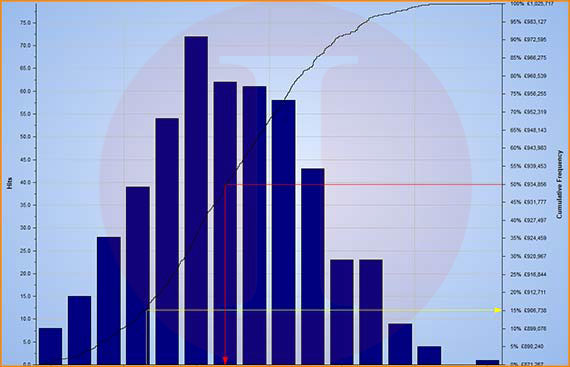
Figure 3: Primavera Risk Analysis Distribution Graph
Tornado Graph
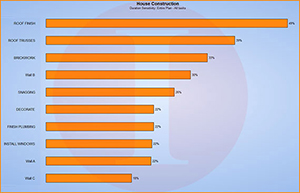
Figure 4: Primavera Risk Tornado Graph
Primavera Risk Analysis tornado graphs (see figure 4) help users identify key risk drivers and pinpoint the task or risk event that is preventing their schedules from performing as expected. Alternatively, users can employ cost-sensitivity reports to isolate the most-cost-critical tasks or risk events. Interactive drill-down risk tornados enable quick and easy risk driver determination to report on key risk drivers.
The Tornado Graph can help identify both the tasks and the risks that have the greatest impact on project duration and cost. Those tasks and risks are where you should target mitigation efforts in order to maximize the return on mitigation expenditures.
Scatter Plot

Figure 5: Primavera Risk Analysis Scatter Plot
Users can use this type of report (see figure 5) to determine the combined probability of achieving given budgets and completion dates as well as to perform what-if analyses (by interactively varying cost and schedule thresholds to reveal the resulting chances of success).
The scatter plot shows the relationship between two outputs of a risk analysis sucs as cost and duration. Each point on the plot represents two values for one iteration of the analysis – one value by its position on the vertical axis.
Distribution Analyzer
Primavera Risk users can employ this type of report to:
- Compare scenarios and determine the cost/benefit ratio of mitigation plans (see figure 6)
- Overlay an unlimited number of cost or schedule risk distribution reports
- Send risk distributions directly from the risk histogram view to the distribution analyzer report for risk scenario comparison
- Take advantage of standard and advanced cost modes for quick and easy modeling of costs and resources
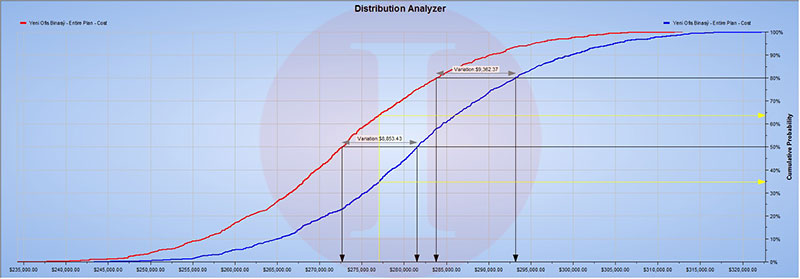
Figure 6: Primavera Risk Analysis Distribution Graph
Probabilistic Cash Flow
A probabilistic cash flow report (shown in Figure 7) is critical for forecasting, longterm budgeting, and earned-value management systems (EVMS) reporting. In addition to providing reporting and overlay options such as percentile date shading, Primavera Risk Analysis can filter the probabilistic cash flow based on specific resources and cost classes within the project plan. In addition, cash flows can be generated for specific resource and cost types.

Figure 7: Primavera Risk Analysis Probabilistic Cash Flow
Summary Risk Report
Primavera Risk Analysis lets users quickly share the results of their risk analyses via summary risk reports. Users simply select the activities, risk inputs, and risk outputs, and Primavera Risk Analysis creates an interactive report that includes the links between inputs and outputs in the report and the activities in the schedule.
Primavera Risk Analysis Integration
Providing easy integration with a wide range of scheduling tools and risk register solutions, Primavera Risk Analysis helps project driven organizations ensure that mission-critical projects come in on time and under budget. Primavera Risk Analysis delivers full-lifecycle cost and schedule risk analytics and easy techniques for determining contingency and risk response plans and for reporting confidence levels for project success. Primavera Risk Analysis works with the following Oracle Primavera project portfolio management applications:
- Primavera P6 Enterprise Project Portfolio Management (Oracle Primavera EPPM)
- Primavera P6 Project Portfolio Management (Oracle Primavera Professional PPM)
- Primavera Portfolio Management
- Primavera Contract Management
Key Benefits of Primavera Risk Analysis
- Integrate directly with project schedules and costs
- Provide a comprehensive means of reporting project confidence levels
- Produce risk analysis reports in a variety of formats
- Provide techniques for determining contingency and risk response plans
Conclusion
Providing easy integration with a wide range of scheduling tools and risk register solutions, Primavera Risk Analysis helps project-driven organizations ensure that mission-critical projects come in on time and under budget. Delivering full-lifecycle cost and schedule risk analytics, Primavera Risk Analysis offers easy techniques for determining contingency and risk response plans and for reporting confidence levels for project success.






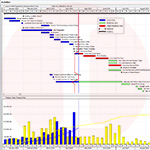 PRIMAVERA PROJECT PORTFOLIO MANAGEMENT
PRIMAVERA PROJECT PORTFOLIO MANAGEMENT PRIMAVERA ENTERPRISE PROJECT PORTFOLIO MANAGEMENT
PRIMAVERA ENTERPRISE PROJECT PORTFOLIO MANAGEMENT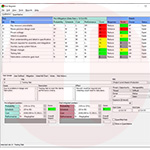 ORACLE PRIMAVERA RISK ANALYSIS
ORACLE PRIMAVERA RISK ANALYSIS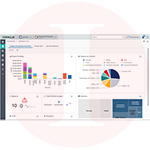 ORACLE PRIMAVERA CLOUD
ORACLE PRIMAVERA CLOUD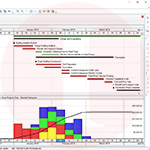 PRIMAVERA P6 CLOUD
PRIMAVERA P6 CLOUD

